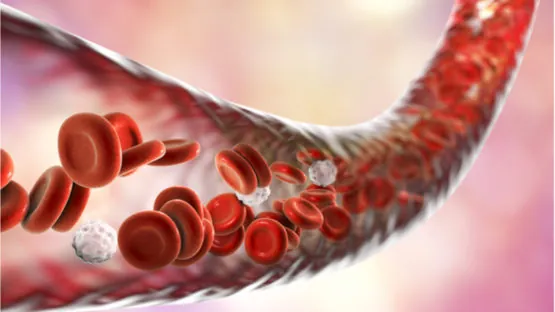Researchers have developed a way to modify an existing cancer drug with toxic side effects into something that is less toxic to blood platelets and more effective at removing harmful and inflammatory senescent cells, one of the reasons we age, from mice.
What are senescent cells?
As you age, increasing numbers of your cells enter into a state known as senescence. Senescent cells do not divide or support the tissues of which they are part; instead, they emit a range of potentially harmful chemical signals that encourage nearby healthy cells to enter the same senescent state. Their presence causes many problems: they reduce tissue repair, increase chronic inflammation, and can even eventually raise the risk of cancer and other age-related diseases.
Senescent cells normally destroy themselves via programmed cell death known as apoptosis, and they are also removed by the immune system; however, the immune system weakens with age, and increasing numbers of senescent cells escape this process and begin to accumulate in all the tissues of the body.
By the time people reach old age, significant numbers of these senescent cells have built up, causing chronic inflammation and damage to surrounding cells and tissue. Senescent cell accumulation is proposed to be one of the nine reasons we age and develop the age-related diseases that eventually kill us.
Senolytics
Senolytics are a new class of drugs that are known to be able to induce cell death. One of the first existing drugs to be identified as having senolytic potential was the cancer drug navitoclax (also known as ABT263), an orally active cancer drug, which works by inhibiting the Bcl-2 (B-cell lymphoma 2) pathway. The Bcl-2 gene is the founding gene of the Bcl-2 family of proteins that regulate cell death, by either inhibiting or inducing apoptosis.
Some types of cancers and senescent cells are able to manipulate the Bcl-2 pathway so that it no longer induces apoptosis and allows them to survive and remain at large in the body. Navitoclax targets both Bcl-2 and Bcl-xl as part of its activity and is therefore of interest in the context of destroying senescent cells, but there are concerns about using it.
The main issue with navitoclax, which was identified during the early senolytic experiments, was that it has some serious side effects that limited its use. Chief among these side effects was its dose-limiting platelet toxicity, and using too much runs the risk of causing thrombocytopenia. Thrombocytopenia is a condition that is characterized by abnormally low levels of platelets, known as thrombocytes, in the blood. Platelets are colorless blood cells that help the blood to clot, and they stop bleeding by clumping and forming plugs in blood vessel injuries.
The researchers of a new study have demonstrated that this platelet toxicity can be reduced by the use of proteolysis-targeting chimera (PROTAC) technology to convert the navitoclax into PZ15227, which is far less toxic to platelets and only inhibits Bcl-xl, which is more relevant to senescent cells [1].
The researchers also report that not only can its toxicity be reduced by this conversion process, its effectiveness against senescent cells can be improved as well, leading to rejuvenation of tissue stem and progenitor cells in aged mice. Presumably, this restoration of tissue upkeep and more efficient repair is due to the removal of harmful senescent cells and the resulting reduction of inflammation, which normally inhibits stem cell activity and tissue repair.
Small molecules that selectively kill senescent cells (SCs), termed senolytics, have the potential to prevent and treat various age-related diseases and extend healthspan. The use of Bcl-xl inhibitors as senolytics is largely limited by their on-target and dose-limiting platelet toxicity. Here, we report the use of proteolysis-targeting chimera (PROTAC) technology to reduce the platelet toxicity of navitoclax (also known as ABT263), a Bcl-2 and Bcl-xl dual inhibitor, by converting it into PZ15227 (PZ), a Bcl-xl PROTAC, which targets Bcl-xl to the cereblon (CRBN) E3 ligase for degradation. Compared to ABT263, PZ is less toxic to platelets, but equally or slightly more potent against SCs because CRBN is poorly expressed in platelets. PZ effectively clears SCs and rejuvenates tissue stem and progenitor cells in naturally aged mice without causing severe thrombocytopenia. With further improvement, Bcl-xl PROTACs have the potential to become safer and more potent senolytic agents than Bcl-xl inhibitors.
Conclusion
The refinement of existing senolytic drugs to be more selective and have fewer off-target effects is a solid step forward to preparing these drugs for eventual wide human use in the fight against age-related diseases. If systems such as PROTAC can improve these cancer drugs to destroy senescent cells more efficiently and reduce the negative side effects, then this is wonderful news indeed.
It is almost certain now that senolytics will be the first repair-based therapeutic approach to aging to arrive in humans. Given there are now several human trials and attempts to refine these senolytic drugs underway, it’s really only a matter of time before senescent cell-clearing therapies arrive to the clinic. Let us hope that progress and refinements make that day sooner rather than later.




